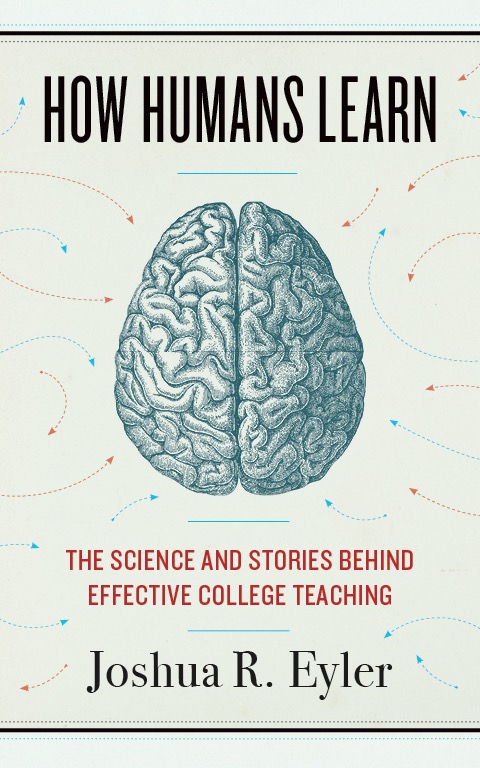learning patterns
Select an item by clicking its checkbox

How Humans Learn: The Science and Stories behind Effective College Teaching
Date Reviewed: January 18, 2019
How Humans Learn argues that our natural systems for learning are connected to human evolution and psychological development, and a better understanding of the way humans learn can help determine what will and will not work in the classroom. Instead of presenting evidence of why a teaching or learning strategy works, Eyler identifies five patterns of learning drawn from psychology, evolutionary biology, and neuroscience to explain why students learn more when certain techniques are chosen over others: curiosity, sociality, emotion, authenticity, and failure. He draws on seminal works in the scholarship of teaching and learning such as that of Bain (What the Best College Teachers Do, 2004) and Fink (Creating Significant Learning Experiences, 2013), and his patterns overlap with principles of learning identified by other scholars (Ambrose et al., How Learning Works, 2010; Davis & Arend, Facilitating Seven Ways of Learning, 2013).
In each chapter Eyler offers examples of classroom practice from various disciplines in Western higher education and provides helpful “key takeaways” that summarize major points and highlight practical suggestions. For example, to stimulate curiosity we can incorporate inquiry, discussion-based pedagogies, and backward design that structures courses from the outset so that every element is tied to an essential question that our course helps students answer (Wiggins & McTighe, Understanding by Design, 2005). To promote sociality, we can use collaborative learning strategies, peer instruction, storytelling, and role-immersion games such as Reacting to the Past. To ensure that emotions guide thinking rather than undermine it, we can demonstrate the relevance of the material and embody “pedagogical caring” by giving frequent feedback, having high expectations for students, and coming to class prepared. To encourage an authentic learning experience, we can allow students to engage in applied problem solving, incorporate experiential and service learning, and bring our own research into the classroom. Finally, we can allow students opportunities to fail when the stakes are low, then give them support and guidance to understand from failure and cultivate growth mindsets, grit, agency, and other resiliency strategies.
Those fascinated by evolutionary developmental biology will likely enjoy the entire book, while others may gravitate towards particular chapters that address topics of interest. Eyler mentions religion only once in the book, during discussion of the “emotional trauma” that can result when students alter knowledge structures or “mental models” tied to their personal beliefs and deeply held convictions (192), but his discussion of “cognitive realism” – when the brain registers a situation as being realistic – also poses interesting challenges for instructors of religion (154). Theological education affords various types of immersive experiences for students, but what sorts of “authentic activities” and “immersions” might instructors of religious studies offer students, especially those who teach in public colleges and universities? Although there are clearly opportunities to apply tools and methodologies from the study of religion to conduct field research or wrestle with problems of the world (155), what characteristics would make other assignments or activities “compellingly” real (157) without being religious?